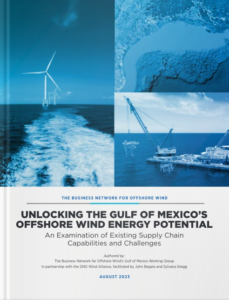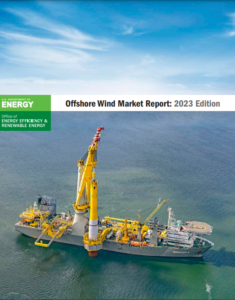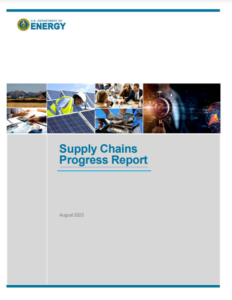The OurEnergyLibrary aggregates and indexes publicly available fact sheets, journal articles, reports, studies, and other publications on U.S. energy topics. It is updated every week to include the most recent energy resources from academia, government, industry, non-profits, think tanks, and trade associations. Suggest a resource by emailing us at info@ourenergypolicy.org.
Resource Library
The Government of Sri Lanka has set a goal to have 70% of its electricity generated by renewable energy sources by 2030, and achieve carbon neutrality in electricity generation by 2050. A currently untapped resource for the country that can help achieve these goals is offshore wind.
Sri Lanka has significant potential for offshore wind, and there is already private sector interest in developing projects. The additional clean energy capacity that could be generated by offshore wind can not only support the country’s transition to net zero carbon, but also increase security of supply and help reduce the economic burden …
View Full ResourceThe Network’s report Unlocking the Gulf of Mexico’s Offshore Wind Energy Potential addresses the region’s unique potential for offshore wind development. Authored in partnership with GNO Wind Alliance, the report coincides with the Bureau of Ocean Energy Management’s (BOEM) first lease sale in the Gulf of Mexico in August 2023.
The report’s detailed examination of the Gulf of Mexico includes key information on the region’s offshore wind supply chain opportunities, associated challenges, and the work being done to address these hurdles. It also provides insight for businesses looking to take advantage of this new frontier for the U.S. offshore wind …
View Full ResourceThe Offshore Wind Market Report: 2023 Edition provides detailed information on the U.S. and global offshore wind energy industries to inform policymakers, researchers, and analysts about technology, economic, and market trends. The scope of the report covers the status of over 293 global operating offshore wind energy projects as well as the broader global pipeline of projects in various stages of development through December 31, 2022. To provide up-to-date information and discussion on this emerging industry in the United States, this report tracks the significant U.S. domestic industry progress and events from January 1, 2022, through May 31, 2023.…
View Full ResourceWind power additions in the United States totaled 8.5 gigawatts (GW) in 2022.1 Wind power growth has historically been supported by the industry’s primary federal incentive—the production tax credit (PTC)—as well as myriad state-level policies. Long-term improvements in the cost and performance of wind power technologies have also been key drivers for wind additions. Nonetheless, 2022 was a relatively slow year in terms of new wind power deployment—the lowest since 2018—due in part to ongoing supply chain pressures, higher interest rates, and interconnection and siting challenges, but also the reduction in the value of the PTC that was in place …
View Full Resource“Renewable Gas: Not A Climate-Aligned Solution for Buildings” covers biogas and synthetic gas and why neither are viable alternatives to building electrification.
Electrification is the most viable option to fully decarbonize Nevada’s buildings. Alternative fuels like renewable gas are more expensive, limited in supply, and can still cause significant environmental and health impacts. Nevada must plan to transition away from existing gas infrastructure as part of its clean energy strategy.…
“All Electric Construction: A Good Deal” details the cost saving opportunity for constructing new homes to be all-electric and avoiding gas pipeline extensions.
All-electric building codes lead to lower construction costs in Nevada by encouraging developers to bypass the cost and complexity of installing new gas lines. These homes have roughly the same utility bills as mixed-fuel homes, which use both gas and electricity. Those savings are projected to improve over time as gas prices rise.…
This report summarizes the progress made by the Department of Energy (DOE) in building and securing supply chains to support the American energy sector industrial base. The energy sector industrial base is all the labor, capital, and public and private entities required to produce energy products. An energy product is any system, component, or consumable commodity used to generate, store, transport, transform, or conserve energy. The report covers progress made since the release of “America’s Strategy to Secure the Supply Chain for a Robust Clean Energy Transition” in February 24, 2022. Equipped with broad policy tools such as the Bipartisan …
View Full ResourceThis working paper uses a field experiment to measure the effectiveness of financial incentives and moral suasion “nudges” to shift the timing of electric vehicle (EV) charging. They find EV owners respond strongly to financial incentives, while nudges have no statistically discernible effect. When financial incentives are removed, charge timing reverts to pre-intervention behavior, showing no evidence of habit formation and reinforcing our finding that “money matters”. Their charge price responsiveness estimate is an order of magnitude larger than typical household electricity consumption elasticities. This result highlights the greater flexibility of EV charging over other forms of residential electricity demand.…
View Full Resource“Renewable Gas: Not A Climate-Aligned Solution for Buildings” covers biogas and synthetic gas and why neither are viable alternatives to building electrification.
Electrification is the most viable option to fully decarbonize Oregon’s buildings. Alternative fuels like renewable gas are more expensive, limited in supply, and can still cause significant environmental and health impacts. Oregon must plan to transition away from existing gas infrastructure as part of its clean energy strategy.…
“All Electric Construction: A Good Deal” details the cost saving opportunity for constructing new homes to be all-electric and avoiding gas pipeline extensions.
All-electric building codes lead to lower construction costs in Oregon by encouraging developers to bypass the cost and complexity of installing new gas lines. These homes have roughly the same utility bills as mixed-fuel homes, which use both gas and electricity. Those savings are projected to improve over time as gas prices rise.…









